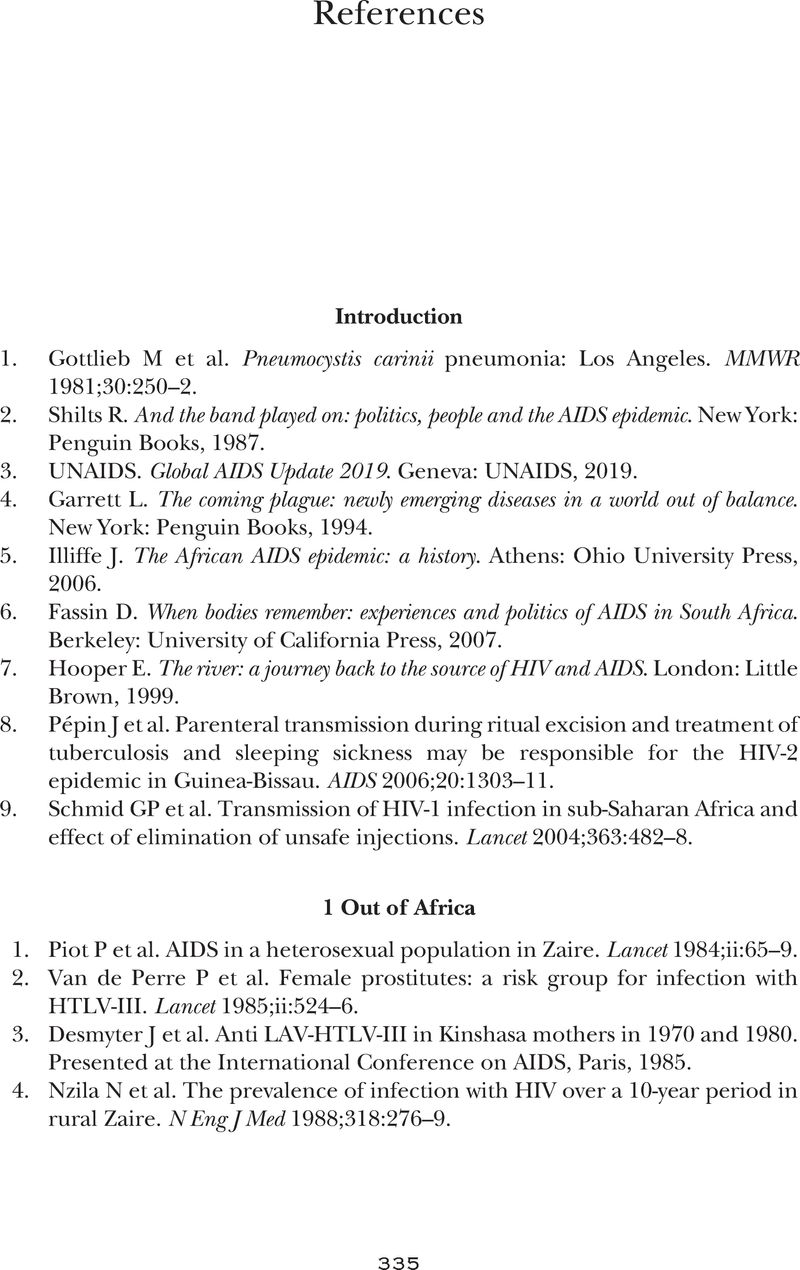Book contents
- The Origins of AIDS
- The Origins of AIDS
- Copyright page
- Dedication
- Contents
- Figures
- Maps
- Acknowledgements
- Note on Toponymy
- Abbreviations
- Introduction
- Chapter 1 Out of Africa
- Chapter 2 The Source
- Chapter 3 The Timing
- Chapter 4 The Cut Hunter
- Chapter 5 The Scramble for Central Africa
- Chapter 6 Tropical Boom Towns
- Chapter 7 The Oldest Profession
- Chapter 8 Injections and the Transmission of Viruses
- Chapter 9 The Legacies of French Colonial Medicine
- Chapter 10 The Legacies of Belgian Tropical Medicine
- Chapter 11 The Other Human Immunodeficiency Viruses
- Chapter 12 From the Congo to the Caribbean
- Chapter 13 The Blood Trade
- Chapter 14 A Long Journey
- Chapter 15 Globalisation
- Chapter 16 A False Villain, a Genuine Hero
- Chapter 17 Epilogue
- References
- Index
- References
References
Published online by Cambridge University Press: 05 January 2021
- The Origins of AIDS
- The Origins of AIDS
- Copyright page
- Dedication
- Contents
- Figures
- Maps
- Acknowledgements
- Note on Toponymy
- Abbreviations
- Introduction
- Chapter 1 Out of Africa
- Chapter 2 The Source
- Chapter 3 The Timing
- Chapter 4 The Cut Hunter
- Chapter 5 The Scramble for Central Africa
- Chapter 6 Tropical Boom Towns
- Chapter 7 The Oldest Profession
- Chapter 8 Injections and the Transmission of Viruses
- Chapter 9 The Legacies of French Colonial Medicine
- Chapter 10 The Legacies of Belgian Tropical Medicine
- Chapter 11 The Other Human Immunodeficiency Viruses
- Chapter 12 From the Congo to the Caribbean
- Chapter 13 The Blood Trade
- Chapter 14 A Long Journey
- Chapter 15 Globalisation
- Chapter 16 A False Villain, a Genuine Hero
- Chapter 17 Epilogue
- References
- Index
- References
Summary

- Type
- Chapter
- Information
- The Origins of AIDS , pp. 335 - 366Publisher: Cambridge University PressPrint publication year: 2021



